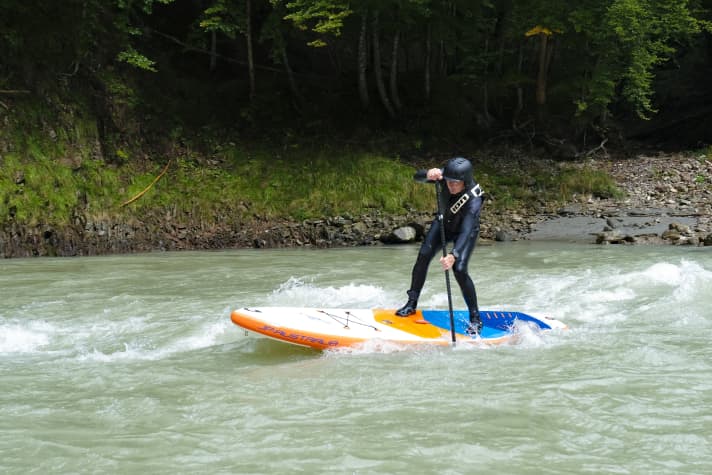
In this article:
Which SUP design is better: heavy or light?
For most brands you will find SUP boards with the same dimensions, i.e. the same width, length and thickness, but with different designs and features. For the test, we initially had two JP Allround Air 10'6'' x 32 boards available in different designs. Once as JP AllroundAir LE and once as JP AllroundAir SL. Later (text below), a third variant was added.
These boards are a popular size because they can also be used for medium-length tours of a few kilometres, but are definitely manoeuvrable and easy to pack.
These first two designs are the two lightest of JP's four designs. The top and bottom of the hull appear to be identical on these two boards, only the edge reinforcement on the "LE" model is more robust, wider and therefore at least slightly stiffer.

Nevertheless, both boards are very light thanks to the soft and quite thin main material and can be rolled up with a very small pack size. The difference in weight is 0.8 kilos (LE:8.24 kilos/SL 7.44 kilos; dry, without air)
Before buying, you might ask yourself which SUP construction is better suited to your purposes. On the test boards, the difference is hardly visible at first. However, the scales show that there is a difference of 0.8 kilos between the LE edition and the SL construction. Does that make any difference at all?
Only the reinforced, double edge provides the additional weight, but also more robustness.
- JP AllroundAir LE >> available here
- JP AllroundAir SL >> available here
Lighter = noticeably livelier and slightly more wobbly
On the water, the lighter board immediately a little livelier, more agile, accelerates subjectively a little better. However, this is more likely to be felt by experienced paddlers and mainly in the first few metres. The agile feeling is also due to the slightly livelier water position around the longitudinal axis: the lighter of the two boards rolls a little faster in waves and under load, reacts faster overall and is slightly more sensitive. This provides a slightly more sporty feel, but also a slightly higher tipping factor.
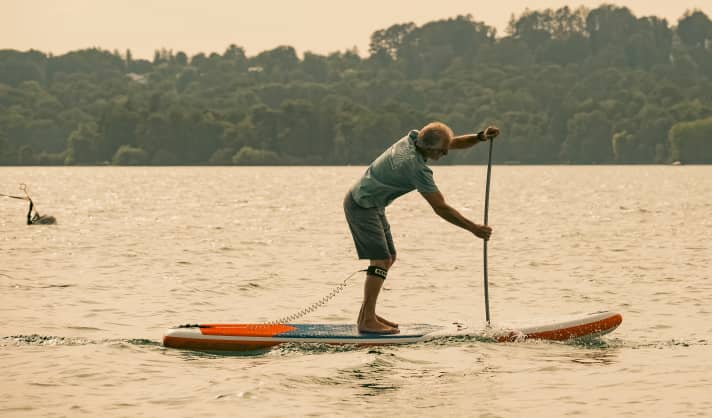
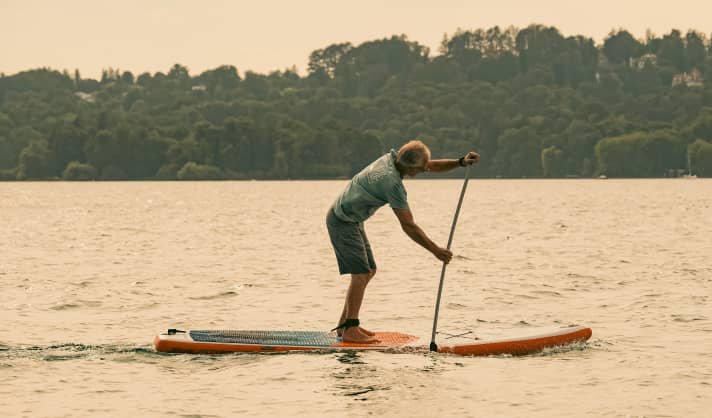
The heavier board was a little more stable in the water and tipped a little slower in sideways waves, which can probably be attributed to the slightly greater inertia due to the additional weight in the rails, which had a very positive effect in this case. So which SUP design is better?
Tight, stiff behaviour is not compatible with the lowest weight
There is probably no absolute "better". If you are rather heavy or less experienced and don't mind the weight, you should go for heavier, more robust designs. If you are lighter, a little more experienced and perhaps have to "lug around" for longer, the lighter versions are probably a good choice.
With SUPs, saving weight always means saving material, which is why maximum taut, stiff behaviour with otherwise identical dimensions cannot be combined with minimum weight.
Heavier boards are safer in the water
As the third board in the group, we were also able to test the same model in the particularly solid "Superior Edition 3D Stringer" construction.
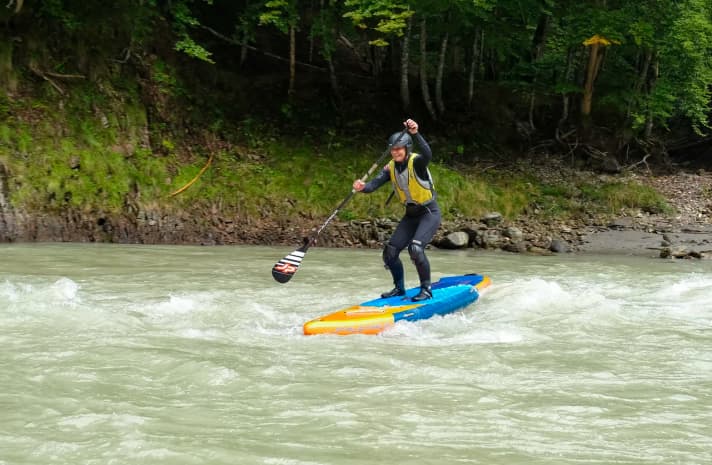
Everything that can already be seen in the "medium" construction is much more noticeable in the highest quality "Superior Edition 3D Stringer" construction. An additional layer of PVC reinforces the board throughout. The lower layer is welded to the deck and base at the edges, while the robust 3D stringer is also glued to the outside of the edge as a wide strip. The board is particularly firm and stiff, which is clearly noticeable in wavy conditions on the lake or even in white water.
Whether through the wind wave or the river wave - the board is less bent and the movements are more controllable: it is therefore easier to paddle in difficult conditions! The extremely solid edge reinforcement simply takes more punishment and the laminate at the top and bottom is also more stable. As a result, the board weighs 10.3 kilos, which is of course also noticeable when carrying it, but also ensures that the board is even more stable in the water.
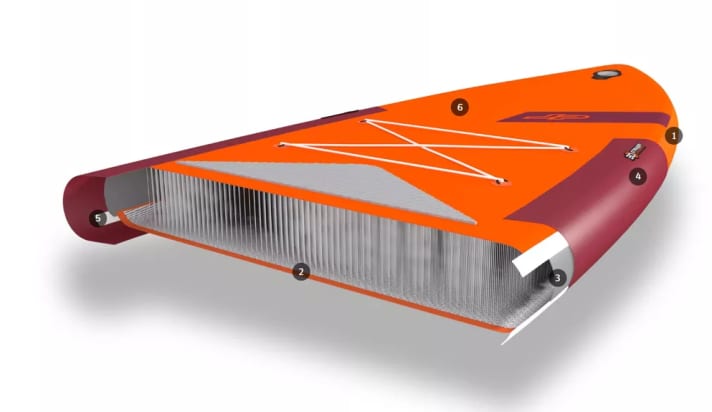
Conclusion and what can be transferred to the other construction methods?
- The biggest, recognisable difference is the weight on land. The "only" two kilos between the heaviest design at JP and the very lightest sound like very little. But it makes a noticeable difference when handling and carrying. Especially for children, but also for longer distances.
- In acceleration the "SL" is already a touch livelier than the 0.8-kilo heavier "LE". Our test experience has taught us that a full two kilos compared to the heaviest "SE 3DS" design has a much more noticeable effect.
- The heaviest board in this comparison (and usually with other brands as well) is significantly thicker at the edges and also in the overall construction. This makes it noticeably stiffer when paddling. Thicker material on the deck, on the other hand, also ensures more direct contact and a firmer feeling under the soles of the feet. The higher weight also "dampens" rolling movements and makes the board somewhat more stable against tipping.
- A heavier board always means using more material. So simply more solid, thicker walls - which, in case of doubt, are better able to withstand sharp stone contact.
- Buying tip: For hard use or heavier paddlers, the highest quality construction actually offers noticeable advantages in terms of stiffness, more stable water position and robustness. The lightest versions also work well and in return offer a clearly noticeable gain in comfort (between the heaviest and lightest construction) when carrying and handling on land!
